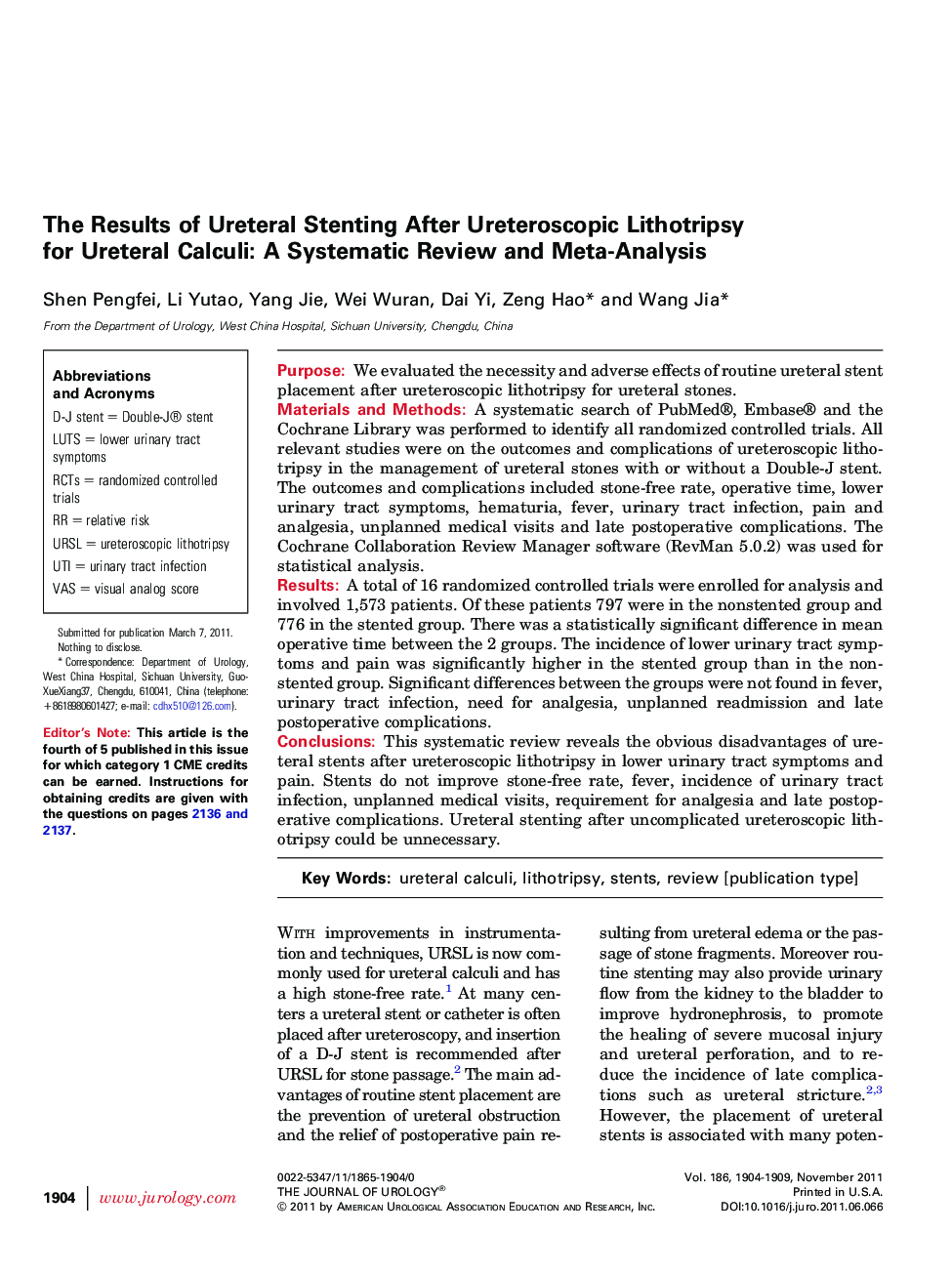| Article ID | Journal | Published Year | Pages | File Type |
|---|---|---|---|---|
| 3864430 | The Journal of Urology | 2011 | 6 Pages |
PurposeWe evaluated the necessity and adverse effects of routine ureteral stent placement after ureteroscopic lithotripsy for ureteral stones.Materials and MethodsA systematic search of PubMed®, Embase® and the Cochrane Library was performed to identify all randomized controlled trials. All relevant studies were on the outcomes and complications of ureteroscopic lithotripsy in the management of ureteral stones with or without a Double-J stent. The outcomes and complications included stone-free rate, operative time, lower urinary tract symptoms, hematuria, fever, urinary tract infection, pain and analgesia, unplanned medical visits and late postoperative complications. The Cochrane Collaboration Review Manager software (RevMan 5.0.2) was used for statistical analysis.ResultsA total of 16 randomized controlled trials were enrolled for analysis and involved 1,573 patients. Of these patients 797 were in the nonstented group and 776 in the stented group. There was a statistically significant difference in mean operative time between the 2 groups. The incidence of lower urinary tract symptoms and pain was significantly higher in the stented group than in the nonstented group. Significant differences between the groups were not found in fever, urinary tract infection, need for analgesia, unplanned readmission and late postoperative complications.ConclusionsThis systematic review reveals the obvious disadvantages of ureteral stents after ureteroscopic lithotripsy in lower urinary tract symptoms and pain. Stents do not improve stone-free rate, fever, incidence of urinary tract infection, unplanned medical visits, requirement for analgesia and late postoperative complications. Ureteral stenting after uncomplicated ureteroscopic lithotripsy could be unnecessary.
